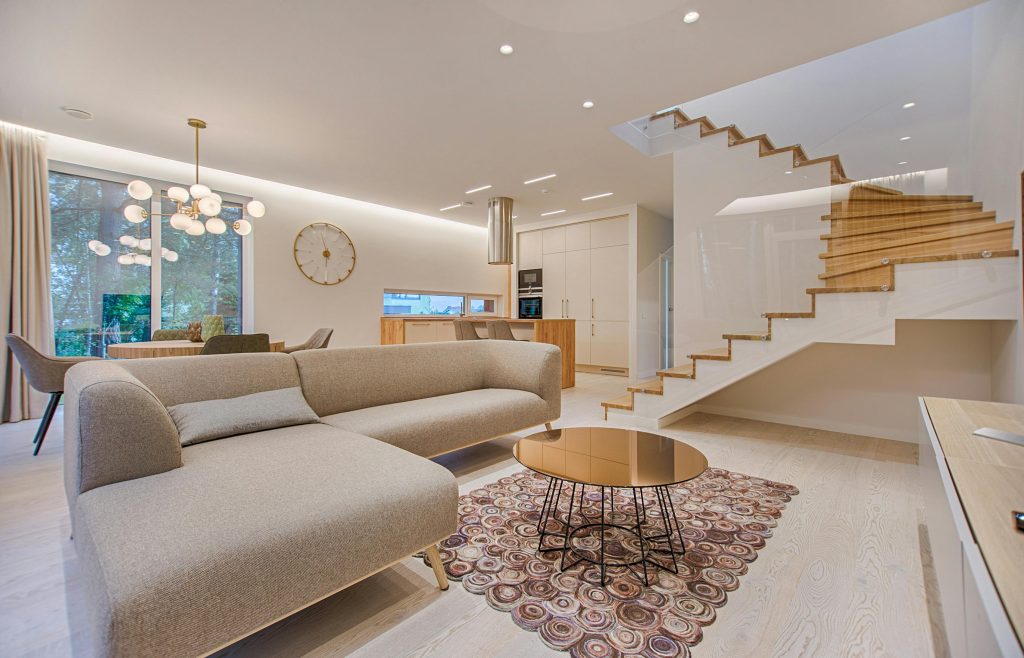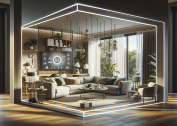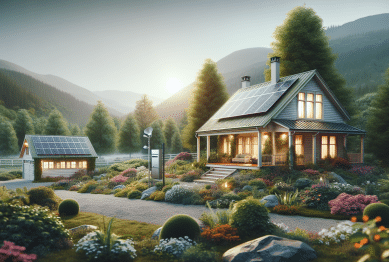The living room has always been the heart of the home—a place where families gather, friends connect, and personal style takes center stage. But as technology evolves and lifestyles shift, the way we design these spaces is changing dramatically. Today, transforming living rooms with smart design is more than a matter of choosing furniture and décor. It’s about creating spaces that are multifunctional, connected, and adaptable to modern living.
With the rise of hybrid work, sustainability concerns, and the growing role of smart home technology, the living room is experiencing a major transformation. Homeowners are increasingly seeking designs that balance comfort, aesthetics, and digital integration—all while ensuring the space is functional for both relaxation and productivity.
This article explores emerging trends that are redefining the modern living room, offering practical insights for homeowners who want to stay ahead of the curve.

Why Transforming Living Rooms With Smart Design Matters
Living rooms are no longer single-purpose areas. They’re media hubs, offices, wellness spaces, and social centers rolled into one. Smart design acknowledges these layered functions and provides solutions that improve efficiency, comfort, and sustainability.
According to a 2024 report from the American Institute of Architects, more than 70% of homeowners remodeling living areas now prioritize multifunctional design and integrated technology. Similarly, a Houzz survey (2023) found that living rooms are the top space where homeowners are introducing smart features, from automated lighting to voice-controlled entertainment systems.
Transforming living rooms with smart design is not just about aesthetics—it’s about creating a flexible, future-ready environment that adapts to modern demands.
1. The Rise of Hybrid Living Spaces
Remote and hybrid work have blurred the lines between home and office. As a result, living rooms are increasingly being designed to double as workspaces without compromising their role as leisure areas.
Key smart design solutions include:
- Convertible furniture: Sofas with hidden desks, extendable tables, and modular shelving.
- Integrated tech hubs: Concealed charging stations and built-in power outlets.
- Zoning with design: Rugs, lighting, and shelving used to visually separate work from leisure zones.
A study by Harvard Business Review highlighted that employees working remotely benefit from dedicated, well-designed home office areas. Living rooms with integrated smart design allow for this flexibility without cluttering the space.
2. Smart Lighting and Mood Control
Lighting has become central to transforming living rooms with smart design. Beyond aesthetics, lighting now adapts to circadian rhythms, reduces energy consumption, and creates customizable atmospheres.
Emerging lighting trends include:
- Human-centric lighting: Systems that adjust brightness and color temperature throughout the day.
- Voice and app control: Amazon Alexa, Google Home, and Apple HomeKit integration.
- Layered lighting: A mix of task, ambient, and accent lighting for adaptable use.
According to Statista (2024), the smart lighting market is expected to surpass $30 billion by 2026, fueled by homeowners seeking both energy efficiency and enhanced comfort.
3. Sustainability as a Core Design Driver
Eco-conscious design is no longer optional—it’s becoming a default expectation. Transforming living rooms with smart design increasingly involves sustainable practices, from material choices to energy efficiency.
Sustainable living room strategies include:
- Furniture made from recycled or responsibly sourced materials.
- Smart thermostats (such as Nest or Ecobee) to optimize heating and cooling.
- Natural elements like indoor plants that purify air and improve well-being.
The U.S. Green Building Council reports that demand for eco-friendly interiors has grown by over 40% in the last five years, with living spaces as a primary focus.
4. The Home Theater Reimagined
Streaming has replaced traditional TV, and living rooms are now evolving into personalized media centers. But unlike the dedicated home theaters of the past, today’s approach prioritizes flexible, integrated design.
Key elements include:
- Ultra-short throw projectors that can transform any wall into a screen.
- Surround-sound speakers embedded in furniture or ceilings.
- Acoustic wall panels that double as design features.
According to PwC’s Global Entertainment & Media Outlook (2023–2027), streaming revenue is set to surpass $115 billion by 2027, pushing homeowners to design living rooms that enhance viewing experiences.
5. Multifunctional Furniture and Space Optimization
Urban living and smaller homes are fueling demand for furniture that adapts to multiple uses. Transforming living rooms with smart design often starts with rethinking how furniture supports daily activities.
Popular multifunctional designs include:
- Coffee tables that double as storage or workstations.
- Sectional sofas with built-in charging ports.
- Modular shelving that expands or contracts as needed.
These solutions make small living rooms feel larger and allow homeowners to make better use of available space.
6. Personalization Through Smart Technology
Smart design isn’t just functional—it’s personal. Living rooms are increasingly reflecting individual preferences through technology that adapts to the user’s lifestyle.
Examples of personalization include:
- Smart thermostats adjusting to preferred room temperatures.
- AI-driven entertainment recommendations on smart TVs.
- Custom lighting presets for reading, relaxing, or social gatherings.
A McKinsey & Company report (2023) found that 71% of consumers now expect personalized experiences, and this demand extends to home design.
7. Biophilic Design Meets Technology
One of the most exciting trends in living room design is the fusion of biophilic elements—like natural light, plants, and organic materials—with smart technology.
For example:
- Automated blinds maximize natural daylight while reducing energy costs.
- Smart irrigation systems help maintain indoor gardens.
- Acoustic wood panels combine soundproofing with a natural aesthetic.
Biophilic design not only boosts mental health but also complements sustainable smart design practices.
Practical Guide: How to Start Transforming Your Living Room With Smart Design
If you’re inspired to update your living room, here are practical steps to begin:
- Assess Your Needs – Decide whether your living room should serve as a workspace, media hub, relaxation area, or all of the above.
- Start Small – Introduce smart lighting or modular furniture before investing in full-scale renovations.
- Think Long-Term – Choose energy-efficient solutions and timeless furniture that won’t feel outdated quickly.
- Prioritize Flexibility – Use furniture and design elements that can evolve as your lifestyle changes.
- Balance Tech and Comfort – Ensure technology enhances the space without overwhelming it.
Conclusion
Transforming living rooms with smart design is not just a passing trend—it reflects how our lives, work, and social habits are evolving. From hybrid spaces and smart lighting to sustainable materials and personalized technology, the modern living room is becoming a dynamic, future-ready environment.
As technology continues to advance, the challenge for homeowners and designers alike will be to strike a balance between digital innovation, comfort, and sustainability. By embracing these emerging trends, living rooms can truly serve as adaptable, stylish, and functional hubs for modern living.
References:
- American Institute of Architects (AIA) – Home Design Trends Survey (HDTS) https://www.aia.org/resource-center/home-design-trends-survey-hdts
- Houzz – 35 Home Design Trends on the Rise in 2023 https://www.houzz.com/magazine/35-home-design-trends-on-the-rise-in-2023-stsetivw-vs~164032473
- U.S. Green Building Council (USGBC) – Green Building Trends and Sentiments https://www.usgbc.org/sites/default/files/2023-06/2023-USGBC_Green-Building-Trends.pdf









